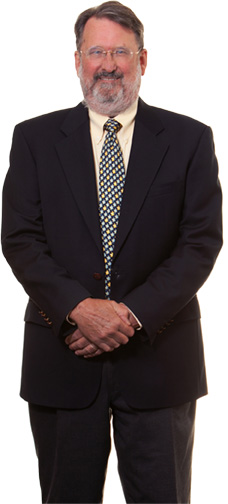 Pediatric Orthopaedic Surgeon
Pediatric Orthopaedic Surgeon
Children’s Hospital of The King’s Daughters
Having practiced in Hampton Roads for more than thirty years, Dr. Sheldon St. Clair is no stranger to treating the children of former patients. These days, he notes with pride, he’s treating their grandchildren.
Following a fellowship in pediatric orthopedics at Tufts-New England Medical Center Hospital, Dr. St. Clair came to Hampton Roads in 1984 and practiced with Vann-Atlantic Orthopedics Specialists until 1999, when he joined the staff of Children’s Hospital of The King’s Daughters.
Throughout his career, Dr. St. Clair has seen extraordinary advances in the treatment of pediatric spine deformities like scoliosis, from the Harrington rod to Luque wires and combinations of those two modalities, to Cotrel-Doubusset instrumentation and later, pedicle screw fixation. He has not only seen these advances, he has made significant contributions to the evolution of the modalities and techniques used in the care of patients as young as neonates, and into their early 20s.
He began working with the spinal implant industry in the 1990s, his first efforts being in the development of growth rod systems for children with early onset scoliosis, who weren’t responding to conservative management like casting or bracing. He later worked on the team that developed the Arsenal AIS system, which offers a unique solution to address complex deformities in both children and adults with scoliosis. The latest iteration of the Arsenal was launched in January of 2017, and is considered the best available on the market today.
Dr. St. Clair has served in many leadership roles at CHKD, including chief of the department of orthopedics, surgical director of orthopedics, vice president of Children’s Health Network, vice president of surgical affairs, and president of the CHKD professional staff. He is a member of the clinical faculty of Eastern Virginia Medical School as assistant professor of orthopedics and serves as the program director of pediatric orthopedic residency training at CHKD.
Dr. St. Clair helped develop CHKD’s spasticity management program, a multidisciplinary clinic designed to treat cerebral palsy patients. He also has served as the orthopedic surgery attending at the spina bifida clinic.
Most recently as Orthopedic Director of the spine program, Dr. St. Clair has been instrumental in developing the spine program at CHKD to standardize care, develop protocols and use a team approach for both conservative and operative treatment of all pediatric spine deformity. The team consists of pediatric trained neurosurgeons, orthopedic surgeons, nurses, physical therapists, orthotists, office staff and the perioperative team. This comprehensive program has implemented the principles of quality, safety, value, and expertise to the program, which has resulted in decreased blood loss, shortened hospital length of stay, decrease in SSI and an increase in patient/family satisfaction.
He’s particularly excited about a research project he’s currently doing in collaboration with the computer simulation/mechanical engineering departments at Old Dominion University. With a grant from Children’s Health Foundation, the team is developing computer simulation models that describe spine deformities like scoliosis. Studies on cadavers to identify surrounding ligaments will enable the team to accurately place those ligaments into the computer simulation model, which will in turn show how much force would be necessary to put on the spine to result in the needed correction.
“It’s never been done,” Dr. St. Clair says. “In the past, we’ve had to estimate the level of force by our own experience and knowledge. There’s been no science behind it. This research project is trying to answer some of those questions.”

